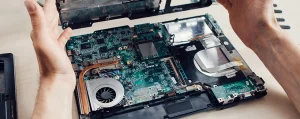PCBs, or printed circuit boards, are a type of electrical component that is used in a wide variety of devices. They are made up of several different components, each with its own unique function. The most common type of PCB is the single-sided board, which has components on one side and a ground plane on the other. Double-sided PCBs have components on both sides, and multi-layer PCBs have even more layers. PCBs are used in everything from computers to televisions to cell phones. They are essential for modern electronics, and their use is only going to grow in the future.

The substrate is the foundation of the PCB, and it is made up of a thin layer of plastic or fiberglass. The substrate is what the other components are attached to. The substrate has many holes drilled into it, and these holes are what the components are soldered to. The substrate also has traces on it, which are the pathways that connect the different components together. The substrate is usually made from FR4, which is a fire-retardant material. but other materials can be used as well. The most important thing about the substrate is that it is very thin, so that it can be easily laminated. Lamination is when the substrate is sandwiched between two layers of copper. This process creates a very strong bond between the substrate and the copper, and it also helps to prevent corrosion.
The second component of a PCB is the copper foil. The copper foil is a thin sheet of metal that is laminated to the substrate. It provides the circuitry that allows electronic devices to function. Copper is an excellent conductor of electricity, and it also has a high resistance to corrosion.
The third component of a PCB is the solder mask. This thin layer of plastic or rubber helps to protect the underlying copper foil from being damaged and also makes the soldering process cleaner. In addition, the solder mask helps prevent shorts and other electrical problems. To maximize protection, the solder mask is often applied in multiple layers. For example, a double-sided PCB may have a layer of solder mask on both the top and bottom of the board. When the PCB is being manufactured, the solder mask is usually applied in a liquid form and then cured using heat or ultraviolet light. This process creates a strong bond between the solder mask and the underlying copper, which helps to ensure reliable electrical performance.
The fourth component of a PCB is the legend. The legend is a printed label that tells you what each of the components on the PCB are. It is usually located near the edge of the board, so that it can be easily seen. The legend can be printed on the top or bottom of the PCB, or on both sides. It is also often printed on the component side of the board, so that it can be easily seen when the board is assembled. The legend can be printed in various colors, depending on the design of the PCB. The most common colors are black, white, and yellow.
The fifth and final component of a PCB is the silkscreen. The silkscreen is a layer of paint or ink that is used to print text and graphics on the PCB. It is usually made from a polyester film, and it is applied to the board after the solder mask has been applied. The silkscreen helps to identify the different components on the board, and it also helps to keep the solder mask in place. When the board is exposed to ultraviolet light, the paint or ink becomes fluorescent, making it easy to identify any defects. The silkscreen is an essential component of any PCB, and it plays an important role in ensuring the quality of the finished product.
Printed circuit boards, or PCBs, are an essential part of modern technology. They are used in a wide range of devices, from cell phones and computers to TVs and microwaves. PCBs and various other electronic components can now be bought online as well. By understanding the different components that make up a PCB, you can better understand how these devices work.
